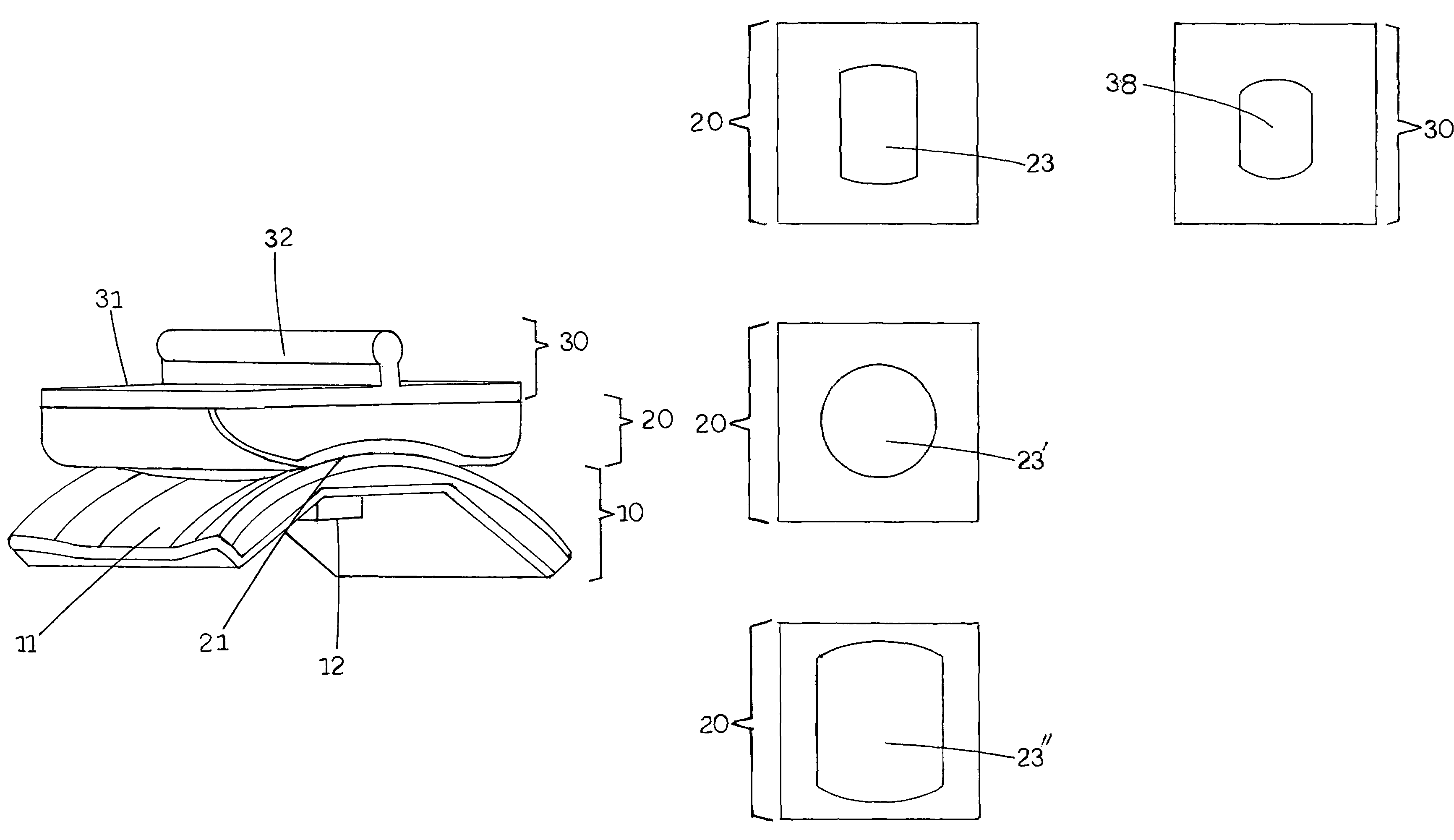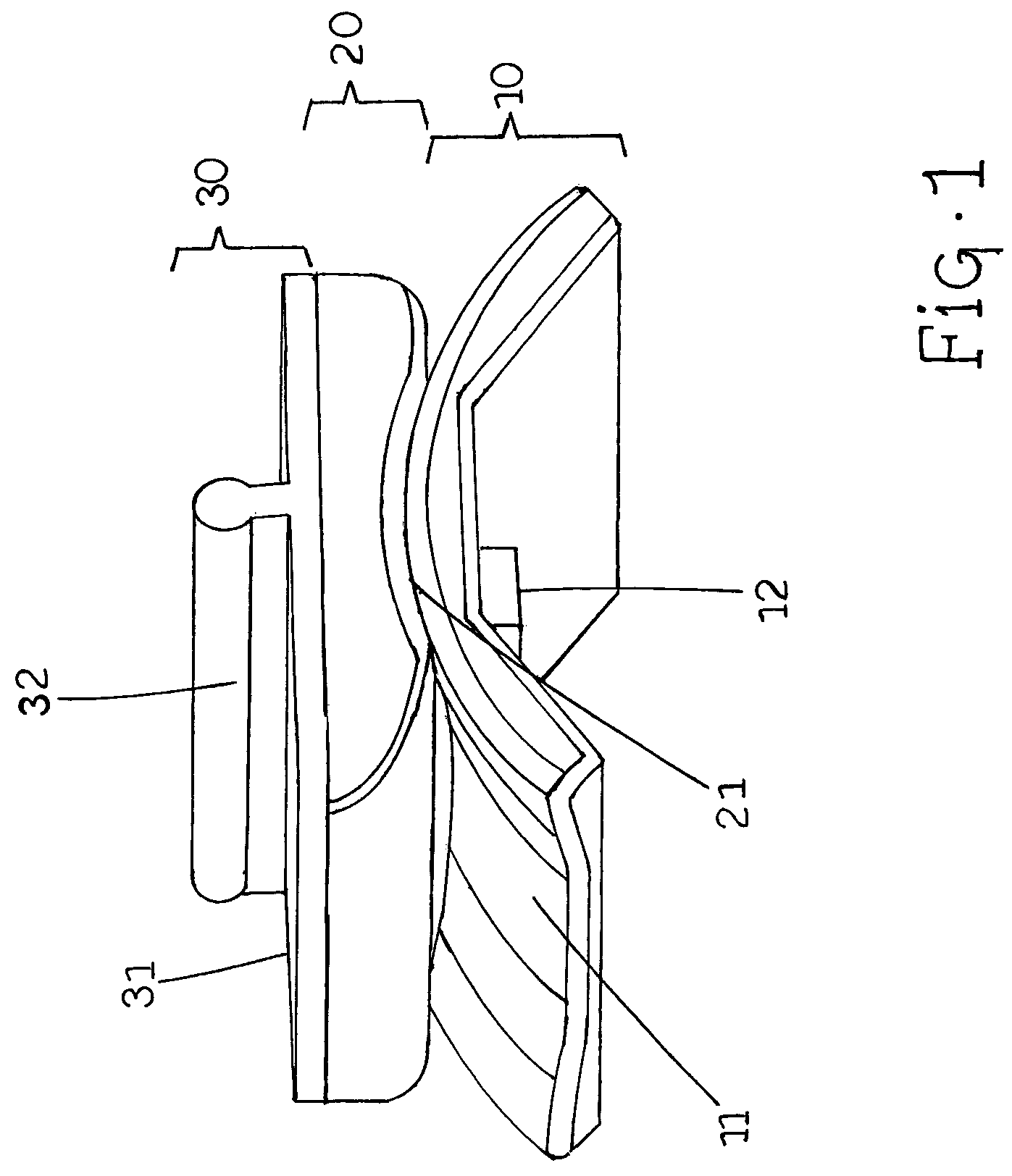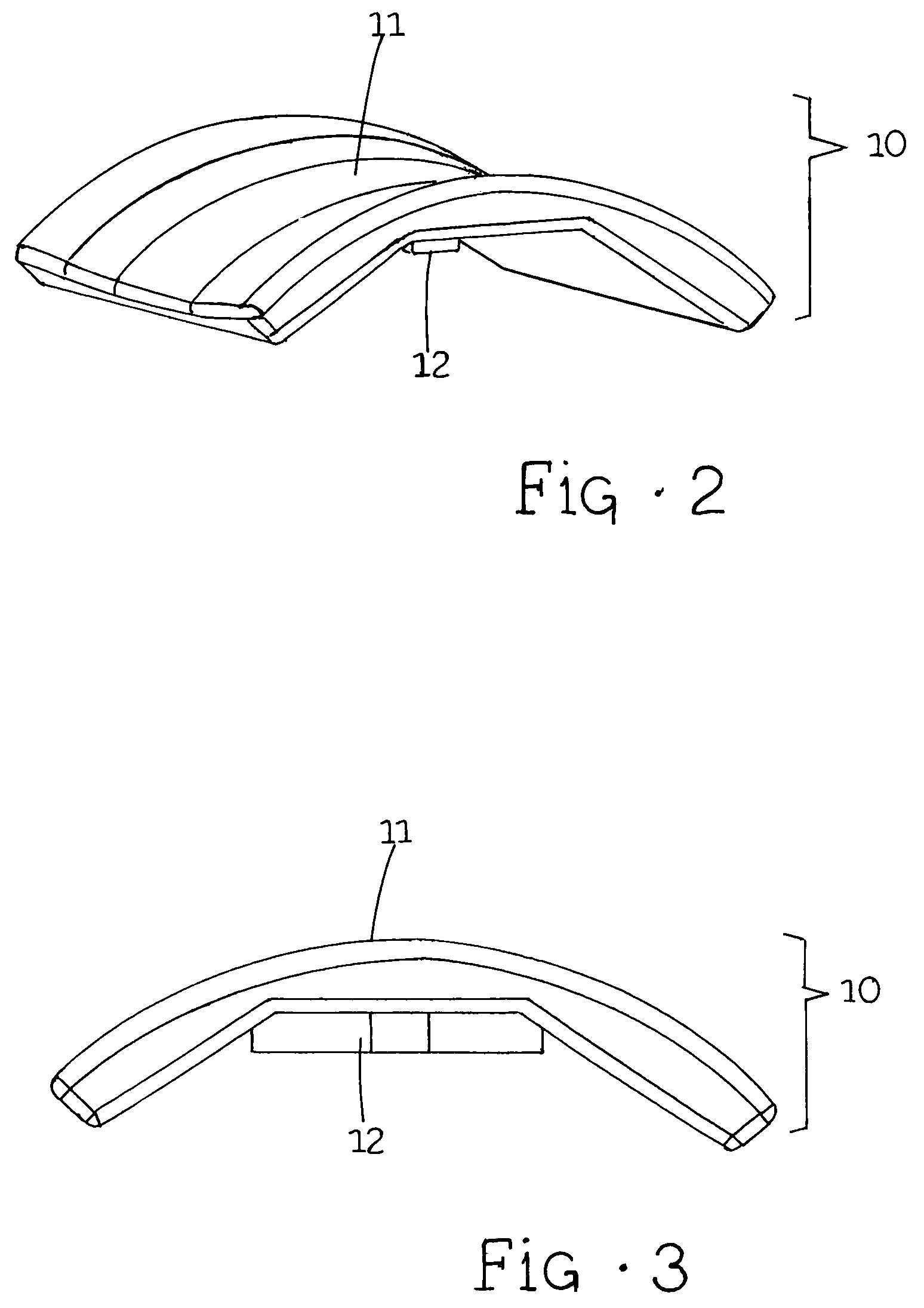Modular total ankle prosthesis apparatuses and methods
a total ankle and prosthesis technology, applied in the field of total ankle prosthesis equipment and methods, can solve the problems of affecting the effect of prosthesis wear, long and relatively unsuccessful history of total ankle arthroplasty, and particularly problematic replacement of ankle joints,
- Summary
- Abstract
- Description
- Claims
- Application Information
AI Technical Summary
Benefits of technology
Problems solved by technology
Method used
Image
Examples
Embodiment Construction
[0024]FIG. 1 illustrates a total ankle joint replacement prosthesis 1 comprising three components: a talar component 10, a tibial component 30, and a bearing 20 disposed therebetween. It is envisioned that one or more of these components could be formed of separable components as desired and as can be appreciated by those of skill in the art.
[0025]Talar component 10 can preferably be made from any suitable material such as a metallic material such as cobalt-chrome or titanium alloy, or other biologically stable material. As shown in FIGS. 2 and 3, talar component 10 can have an upper surface with a suitably shaped surface, such as saddle shaped surface 11, for articulation with bearing component 20. Saddle shaped surface 11 can have a convex shape when viewed laterally and a concave shape when viewed from the anterior or posterior. The dimensions and arrangement of this surface can vary suitably as can be appreciated by those of skill in the art depending on the motions desired in t...
PUM
 Login to View More
Login to View More Abstract
Description
Claims
Application Information
 Login to View More
Login to View More - R&D
- Intellectual Property
- Life Sciences
- Materials
- Tech Scout
- Unparalleled Data Quality
- Higher Quality Content
- 60% Fewer Hallucinations
Browse by: Latest US Patents, China's latest patents, Technical Efficacy Thesaurus, Application Domain, Technology Topic, Popular Technical Reports.
© 2025 PatSnap. All rights reserved.Legal|Privacy policy|Modern Slavery Act Transparency Statement|Sitemap|About US| Contact US: help@patsnap.com



